 On Monday, Apple amazed many of it's fans at the WWDC 2009 Keynote, including new announcements about Safari 4, Snow Leopard, the new MacBook Pro lineup and the new iPhone 3G S. Even if you're not working for Apple, you too can still use the iPhone or iPod Touch to amaze people yourself.
On Monday, Apple amazed many of it's fans at the WWDC 2009 Keynote, including new announcements about Safari 4, Snow Leopard, the new MacBook Pro lineup and the new iPhone 3G S. Even if you're not working for Apple, you too can still use the iPhone or iPod Touch to amaze people yourself.
The iPhone Flashcard Apps I recently listed should not be forgotten here. The trained memory you develop with these can be used in many ways to amaze people, such as in a memory demonstration or as the secret to a magic effect.
If you hadn't noticed yet, there are already a good selection of iPhone- and iPod Touch-based magic effects.
Mind Reading
• Age Square (Free WebApp Zip Archive!): In this effect, you show a magic square, and ask if the person sees their age in the magic square. They then go through 4 screens, each one with several squares highlighted, and asking whether the person sees their age among those highlighted squares. At the end, another magic square is shown, and it adds up to the person's age in every direction! The program will even optionally step through the numerous arrangements that add to their age.
Werner Miller created this effect especially for Grey Matters. There is now a video tutorial for Age Square available on YouTube. If you'd like to try it out, you can try it out here, but if you're going to do this on any kind of regular basis, please download the file archive, unZIP it, and upload it on your own server space!
• Epicore iPhone Magic (iTunes Link): Rather than a single program, Epicore is an iPhone development company that has a very strong selection of magic routines for the iPhone. From reviews by fellow magicians, their magic app developers think deeper about their magic, and the routines are far more deceptive as a result. Their routines include MindCard (iTunes Link), iDetect (iTunes Link), iCoinPredict (iTunes Link), iCardPredict (iTunes Link), DestinyCard (iTunes Link) and FaceCard (iTunes Link). Faria, from Magiclaffs.org, who first told me about Epicore's magic apps, has a handy tip for those who buy and perform FaceCard: To let your audience member have the resulting picture as a souvenir, press the home and power buttons at the same time to take a snapshot of the screen, add your contact information onto the photo automatically using Imangi Studios' PhotoMarkr app (iTunes Link), and send it to the spectator's e-mail address!
• Google App: In this routine, you have a spectator name any playing card, and then have them ask Google what their card is. Real Google search results are returned, each containing the name of their playing card!
• iForce (iTunes link): Through an interesting use of the iPhone's capabilities, you can apparently predict the outcome of an amazing array of choices. It's disguised as a drawing program, which is also available in the iTunes store. The whole idea is very well thought out. To get a better idea of what it does, watch the videos at the iForce link above.
• iKnow: You show someone your playlist of favorites, and have them choose one song randomly off this list, listen to it, and then imagine the song they heard. You then listen in their ear, as if you're trying to hear what remains of the rhythm in their head, and then name the chosen song! This effect isn't limited to just the iPhone and iPod Touch. It will work with just about any MP3 player out there!
• iMagic: In this iPhone card routine, you have several spectators name a card by having one choose number or picture cards, one choose a suit, and the final one choose the number. Without touching the iPhone, the named card appears briefly over the iPhone menu, and then vanishes. The hands-off handling of the iPhone, along with the card being named instead of chosen, add to the seeming impossibility.
• iSensor (iTunes link): In this effect, you show a screen with 5 ESP symbols (star, cross, wavy lines, circle and square), turn the phone face down, and ask them to name anyone of the symbols. You then pick it up and show that it is the only symbol remaining on the screen! If they think this is simply done with Voice Control, you can repeat the effect, and have them make their choice known by drawing the symbol in the air. I first mentioned this one back in May, but it deserves mention here, too. There are effects with a similar principle, such as iMystical and iThought Receiver, but iSensor comes across as the most mystifying and deceptive.
• MagiCard (iTunes link): In this effect, a card is chosen from a real deck, and the image of the selected card appears on the iPhone, all without the performer ever touching the iPhone! As you can see from the videos, there are actually multiple ways you can present this effect. The hands-off nature of this routine makes it very deceptive.
• MindBeam: In this video, you beam an app to another persons iPhone. The App displays 3 playing cards or postcards, and they secretly choose one while you're out of the room. When they call you back in, you can name their selection! Performed properly, this can be an amazing piece.
• Mobile Opener: This effect is a professional stage magic routine that isn't limited specifically to the iPhone and iPod Touch, but members of your audience can use their iPhones to take part in it. In the routine, numbers given by the audience are then totaled. The total is then shown to have been predicted. It sounds simple, but the real strong point is the presentation, which is intended to generate audience interest at the beginning, and work the next speaker or the client's product/message into the effect.
• Pick Any Card (iTunes Link): A face card is on the face of the iPhone/iPod Touch, and a spectator is asked to guess whether this card is red or black, and their guess is shown to be correct. Next, the performer asks the spectator whether they think a face down card is high or low, and the spectator's guess proves correct again! Since the spectator seems in tune enough, they're asked to name any card, and then to flip the card over on the screen. Think you've got this one figured out? If so, consider the fact that at no point in the routine does the performer ever touch the screen!
Production Effects
There are numerous production effects in which you appear to remove an object from the screen. They all have the same basic method, but in the right time and place, these can be amazing interludes. Among the objects you can produce from your iPhone are cards, bills (comedy version), coins (including slot winnings!), popcorn, matches and sponge balls.
Other
Here are the works of those venturesome soles who like to create magic that doesn't fit neatly into pre-determined categories.
• Books: If you look, there are many books of magic effects that have many routines that can be adapted to the iPhone or the iPod Touch with a little thought. If you're going this route, my first two must-have recommendations are Impuzzibilities and Further Impuzzibilities by Jim Steinmeyer. These two works not only teach original effects, but are excellent object lessons in how to disguise mathematical and other self-working principles. From there, good sources of inspiration can be found in Karl Fulves' Self-Working series of books, such as Self-Working Number Magic and Self-Working Mental Magic.
• Easy iPod Magic: This magic.about.com page has 2 free tricks, The Animated iPod Man, in which your iPod seems to bring a paper-drawn stick figure to life, and The iPod Card Trick, in which the iPod makes the name of a selected card appear in a square drawn on paper. The former is cute, and the latter seems to be the same, until the iPod is removed, and the real drawing has changed. The screen ratio of the included videos are intended for classic iPods, but the idea could easily be adapted for the iPhone and iPod Touch. Even if you don't have the skills or software to create a video, a sequence of picture in the photo album could be used to make the picture appear.
• Magic Compass (iTunes link): Simply put, you can place any object anywhere around the iPhone, and the Magic Compass will point right to it. With the iPhone 3G S' new compass feature, this effect is actually quite relevant. The same site also offers a cuter version of the same trick with bunnies (iTunes link).
• iPunk'd: You definitely won't find this one on the App Store, as there's nothing to download! In iPunk'd, you take someone's ear phone cord, and cut it with scissors. Before they kill you for destroying their headphones, you magically restore the cord! Yes, this is the cut & restored rope updated and made relevant. If you're familiar with how to use a certain silk-vanishing gimmick to cut and restore a rope, that would make this routine even more deceptive.
• iScan: This one isn't quite a mind reading effect, and it isn't quite a production, so it wouldn't fit in the first 2 categories. In iScan, a card is selected from a deck, returned, and shuffled. You then use your iPhone to scan the spectator. You then run your hand back and forth underneath the iPhone's camera, and the image of the card appears on your hand. Here's a YouTube video of the effect being performed, so that you can get a better idea of this strange effect.
• iUtility: This is from the makers of the Magic With the iPhone DVD below, but instead of having the tricks happen on the iPhone/iPod Touch, this DVD focuses on using the use of your handheld as the method behind tricks, such as switches or vanishes.
• Magic Tattoo (iTunes link): A number is chosen, and used to find out which ESP symbol corresponds with that number. That symbol is then dragged onto a picture of a hand, where it appears on the palm. When you lift the iPhone off of your hand, that same symbol is on your real palm!
• Magic With the iPhone DVD: Nicholas Byrd has put out a 2-disc set of iPhone magic. The first is a performance and instructional DVD, while the other is a data disc, containing all the files needed to perform the effects. Among the more standard iPhone magic effects, such as producing money and the princess card trick (which was overdone on the web long before the iPhone came along), there are more intriguing uses, such as a Hot Rod routine, a penny-to-dime effect, a prediction effect with the icons themselves, and more! The Unofficial Apple Weblog has a review of it here. Not enough for you? You'll be glad to know there's a 2nd volume available now, as well as iUtility (above).
• Predictext (From Mind Blasters): In this routine, you text a message to someone in the audience, and then have them shuffle, cut and deal half of the deck, as you do the same with the other half. You ask if it would be amazing if both sets of dealt cards would have all matching pairs on top (such as both red 10s, both black 5s and so on). Unfortunately, it doesn't work out. However, the top cards on the spectator's pile is correctly predicted on the text message sent earlier! This is probably a rather strange entry for this list, as it depends on a feature most cell phones have, but isn't readily available on the iPhone – SMS Templates. However, there are 3rd party apps which can offer this feature (even for the iPod Touch through AIM!). The routine could also be reworked with AlibiSMS (below), but as you ultimately want your contact information left on a spectator's cellphone, I wouldn't go this route.
• Spirit Photo: This effect seems to dance on the border between prank and magic effect. You borrow a spectator's iPhone, mentioning that you're going to install a “Spectral Filter” for the iPhone camera that can photograph dead spirits. Once the filter is installed, you mention that it works best with pictures of dead people, so you ask them to take out a bill of any denomination. You snap a picture of their bill, but when they look at it, the skull of the person on the bill appears on it! It really is in their photo album, and they can keep it or delete it as they wish.
Not Magic, But . . .
• AlibiSMS (iTunes link): This is a fun app that lets you enter a text message that can be scheduled to come up on your phone later, as if it were happening at that time. With a little creative thinking, this could be used to reveal a prediction.
• Banner (iTunes link): This could be an interesting way to reveal a prediction. It's appears to be an array of LED lights, across which a message scrolls. Here in Vegas, sending a message that way can be very thematic. In a similar vein there's Light Writer (iTunes link), which is basically an iPhone version of those SkyLiner novelties (although since the SkyLiner is only $20/unit, I think I'd rather risk dropping one of those than an iPhone or iPod Touch).
• Deckster (iTunes link): This isn't quite a magic effect, but rather a playing card deck simulator. This App goes to great length to simulate the experience of a deck of cards, down to the opening of a new deck (you even have to remove the seal!), dealing and shuffling the deck in numerous ways (overhand, riffle shuffle and more). The web page hints you may even be able to deal seconds and bottoms, but they're not saying exactly how. This is just too creative not to share here.
• Magic Café's App Forums: The Magic Café now has 3 forums dedicated specifically to magic apps: APPS-alutely (for general discussion of apps), APPealing or APPalling? (for app reviews), and APPearing Soon... (for discusing app announcements, rumors, and marketing). This is a great way to keep up with the latest magic apps.
• Mathemagics (iTunes link): This program gives you lessons on how to quickly solve several challenging arithmetic problems in your head, and then lets you practice your newfound skills. Lightning calcuator-style feats are not only amazing in and of themselves, but are also useful as a build-up to seemingly more difficult feats, such as mind-reading.
• QuickCal (iTunes Link): Do you perform the Day of the Week for Any Date feat? If so, this calendar app is the perfect way to demonstrate that you're correct. Just select the year via the spinning-wheel picker, and you can see a single month, 2 months, 4 months, 6 months, or even a whole year at a glance. True, you could use a perpetual calendar web app, but QuickCal is great for when you don't have a Wi-Fi connection.

 This week, Diamond Jim Tyler demonstrates a new take on an old trick. Regular Grey Matters readers won't be surprised to learn that I like it because it's based on math, and it's very counterintuitive. We'll start with the new video, and then take a closer look at the trick.
This week, Diamond Jim Tyler demonstrates a new take on an old trick. Regular Grey Matters readers won't be surprised to learn that I like it because it's based on math, and it's very counterintuitive. We'll start with the new video, and then take a closer look at the trick.


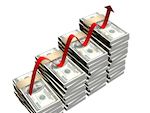
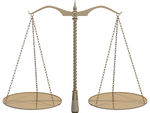
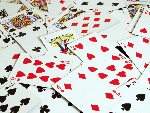

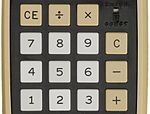

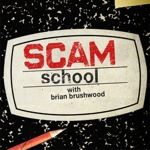


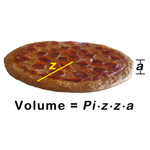 Some problem remain unsolved because they're simply so challenging. Other mysteries remain unsolved simply because they haven't bugged enough people that someone finally sits down and solves the problem. Today, we'll take a look at some interesting mysteries that have finally been solved.
Some problem remain unsolved because they're simply so challenging. Other mysteries remain unsolved simply because they haven't bugged enough people that someone finally sits down and solves the problem. Today, we'll take a look at some interesting mysteries that have finally been solved.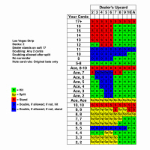 Dealing with memory and living in Las Vegas, I suppose it's inevitable that I should get around to discussing how to memorize basic blackjack strategy.
Dealing with memory and living in Las Vegas, I suppose it's inevitable that I should get around to discussing how to memorize basic blackjack strategy.


